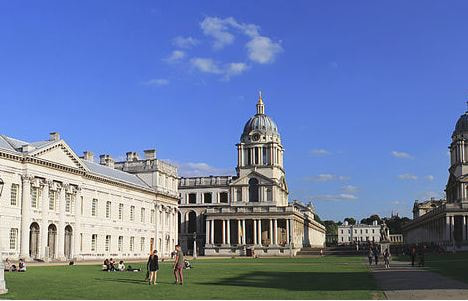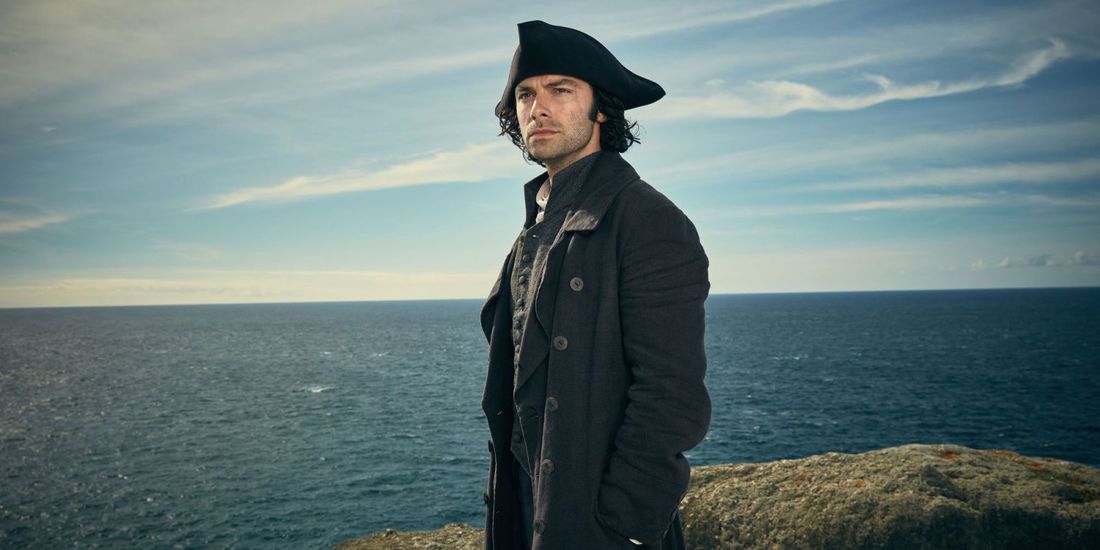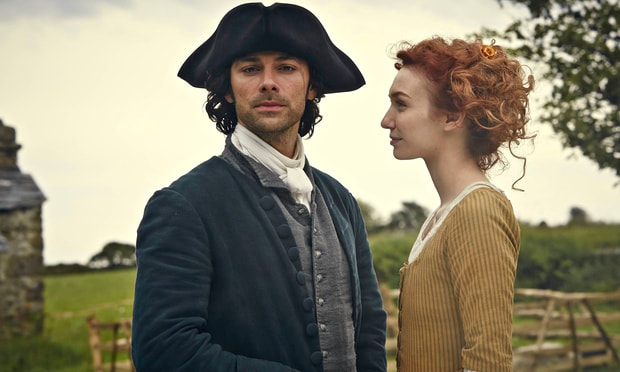Poldark Series 4 – our favourite filming locations (so far!)
Can you believe it? – We’re halfway through Series 4 already. Despite the narrative that includes Poldark’s work in London, we’re delighted to see homage paid to the glorious landscapes of Cornwall once again. In this blog post, we’ve cherry-picked our 5 favourite locations of the series so far. Have we missed your favourite spot? Let us know in the comments below!

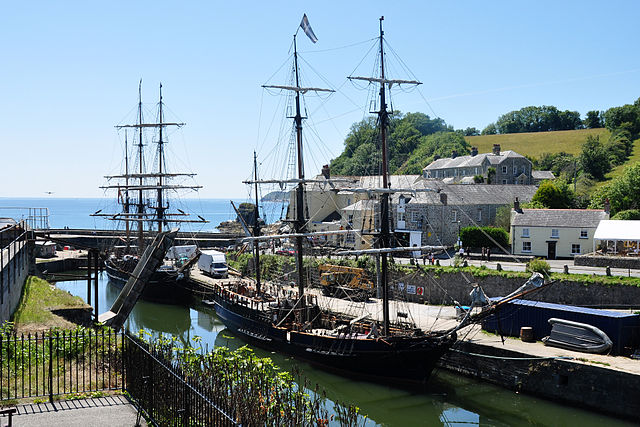
Charlestown
Charlestown is the go-to filming location whenever an historic harbour is required. It has been used in multiple series of Poldark to stand in for Truro Quay, but in Series 4 was the location for the ill-fated riot. [As an aside, Truro did indeed have a very busy and important port for several centuries, though it was a river port rather than a sea port like Charlestown. With the growth of Falmouth, the advent of trains, and the gradual silting up of the river, the quay became less prosperous, and it was eventually bridged and paved over and is now the Lemon Quay piazza.]
In real life, Charlestown is a busy and popular harbour just outside St. Austell. It has a number of very good restaurants and bistros serving great seafood, and a couple of decent pubs as well. It also offers the Cornish shipwreck museum – a must for maritime enthusiasts.
Penberth
Penberth is used as the village where the Carne brothers live. Its beautiful stone slipway serves as the perfect setting for some important scenes. Morwenna and Drake’s secret encounter, where they were interupted by Reverend Osbourne was filmed here, along with various other scenes such as bringing in the may pole from the water.
In real life, Penberth is a beautiful and unspoilt hamlet near Porthcurno. It has no facilities, no café or shop, and parking is very limited, but if you can get yourself there at a quiet time it is a remarkably peaceful and timeless place.
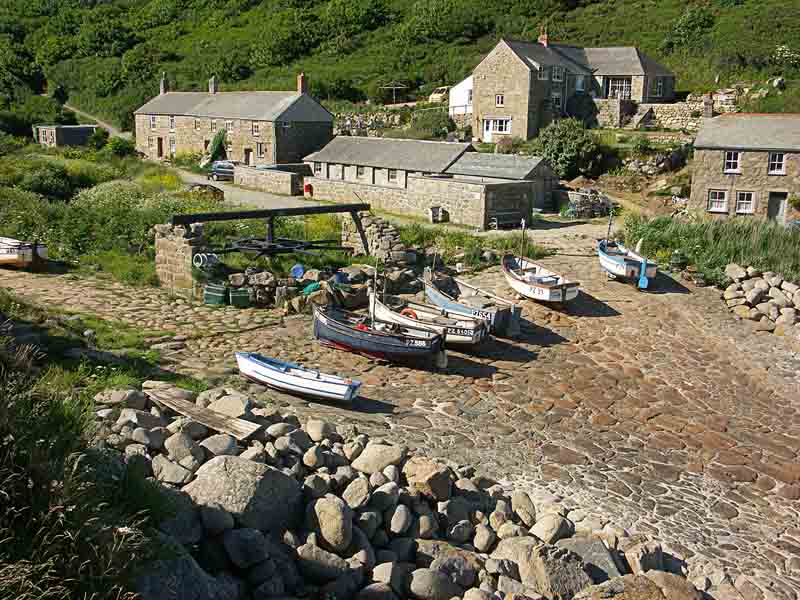
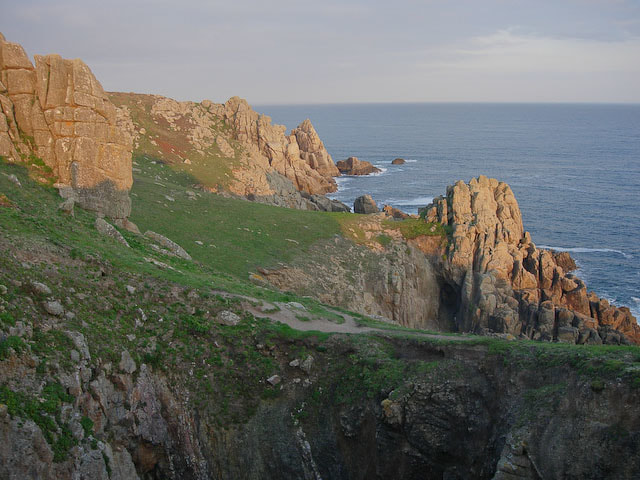
Gwennap Head
Gwennap Head is a stunning part of coastline that features extensively through the all the Poldark series. It has a rather unique geology – instead of the abrupt cliff-faces we see elsewhere in the county, here there are steep grassy slopes through which boulders and fingers of rock emerge, rather reminiscent of the tors you can find on Dartmoor and Bodmin moor. This landscape is used in the background of too many scenes to mention, but perhaps most notably in the scene where Ross embraces to Demelza before departing for London, or where Dwight cradles poor baby Sarah.
In real life, Gwennap head lies about 4 miles south of Lands End, not far from Porthgwaara (another great Poldark filming location). There are a number of easy walks from Porthgwaara, and it’s a great area for spotting birds or even dolphins and porpoises.
Holywell Bay
Holywell Bay has already featured in every episode so far of Series 4. It is instantly recognisable from the twin peaks of Gull Rock that sit out in the bay. At low tide, it offers a vast sandy expanse – perfect for all manner of shots, from Ross galloping at full-speed, to Cornishmen fighting. The dunes are also great for shots of Demelza and her dashing dalliance Hugh Armitage, while the caves to the north of the bay were used in earlier series where Drake and Morwenna struck a chord.
In real life, Holywell Bay is a popular and spacious beach just south of Newquay. Already popular with families and surfers, the Poldark effect has boosted publicity.
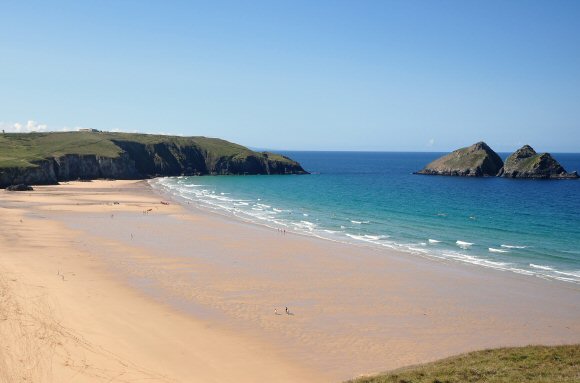

Wheal Owles
West Wheal Owles (pronounced oals) stands in for Wheal Grace, Poldark’s mine – though it has significant computer generated embellishments to turn it into the bustling and working mine we see on screen.
The real mine is found near St. Just, not far from Lands End, and is part of a walk that encompasses Botallack and Levant mines – some of the most photographed structures in Cornwall. It is poignant that shots of the flooding in episode 4 were filmed here. The mine was closed in 1893 after a catastrophic flood which killed 19 men and a boy – one of Cornwall’s worst mining disasters. The event occurred in a similar way to the fictional scenes, where miners accidentally breached a cavity into a neighbouring pit – the sudden influx of water pushed the air through the chambers, extinguishing the lights and plunging the miners into darkness. Many miners in the upper levels were able to escape, but sadly, the bodies of the 20 fatalities were never recovered and a plaque now commemorates the tragedy.
Bonus
Of course, Series 4 is notable in that it features locations other than Cornwall. Therefore, we can’t finish this post without a nod to Poldark’s new stomping grounds in London. The Old Naval College at Greenwich is a beautiful site, with lavish 17th century architecture. The pillars, stone steps, and domes can be seen in several scenes of Ross in London. It’s not a patch on the wild landscapes of Cornwall, but for an urban attraction it’s really quite stunning.
